Stage Extends Forever – M2Tech Young MK III DAC Review
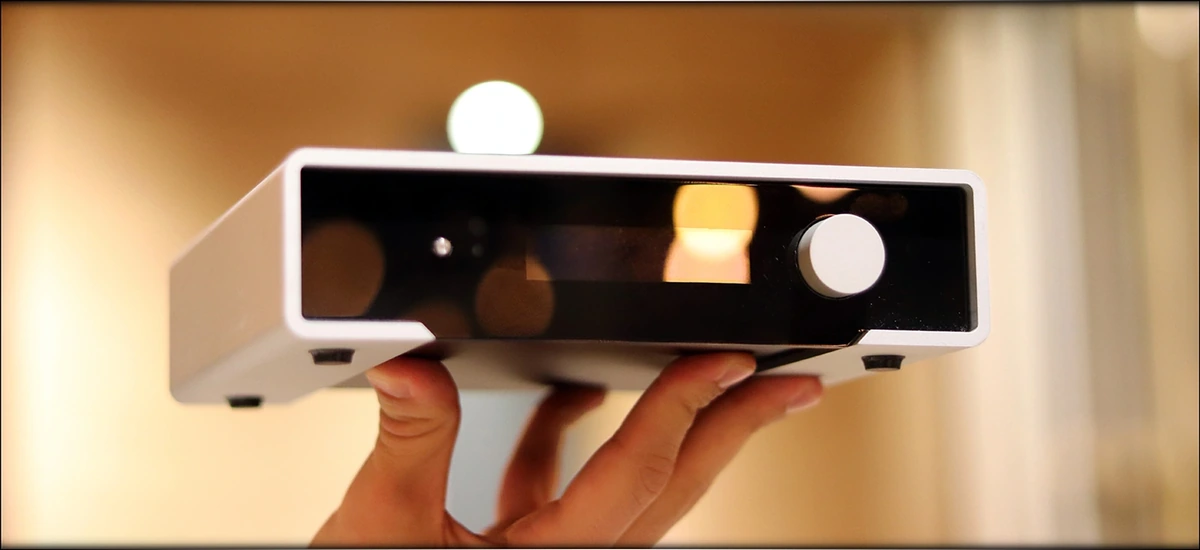
Introduction
M2Tech is a new company from Italy that made its way into my review list, and well, I can tell you they offer the type of warranty and support that any true European company will, and, to say the least, this is at least as good, if not even better than the best we already know about. Of course, their products are mostly high-end, but they have some for the more budget oriented customers, like the HiFace series, and the EVO series. They also have the Rockstar series that are the creme of their overall design, and well, all of them are amazing products, as we’ll discover today in the review about the Young MK III DAC from M2Tech.
It should be noted that I have absolutely no affiliation with M2Tech. I’d like to thank M2Tech for providing the sample for this review. This review reflects my personal experience with M2Tech Young MK III DAC. Every opinion expressed is mine and I stand by it, the purpose of this review is to help those interested in M2Tech Young MK III DAC find their next music companion.
Product Link
You can’t really purchase M2Tech Young MK III directly from their website, so I would recommend contacting one of the Authorised Distributors. For USA, you can get M2Tech products form www.amazon.com, once they are back in stock here: https://www.amazon.com/s/ref=as_li_ss_tl?k=M2TECH
Packaging
First things first, let’s get the packaging out of the way:
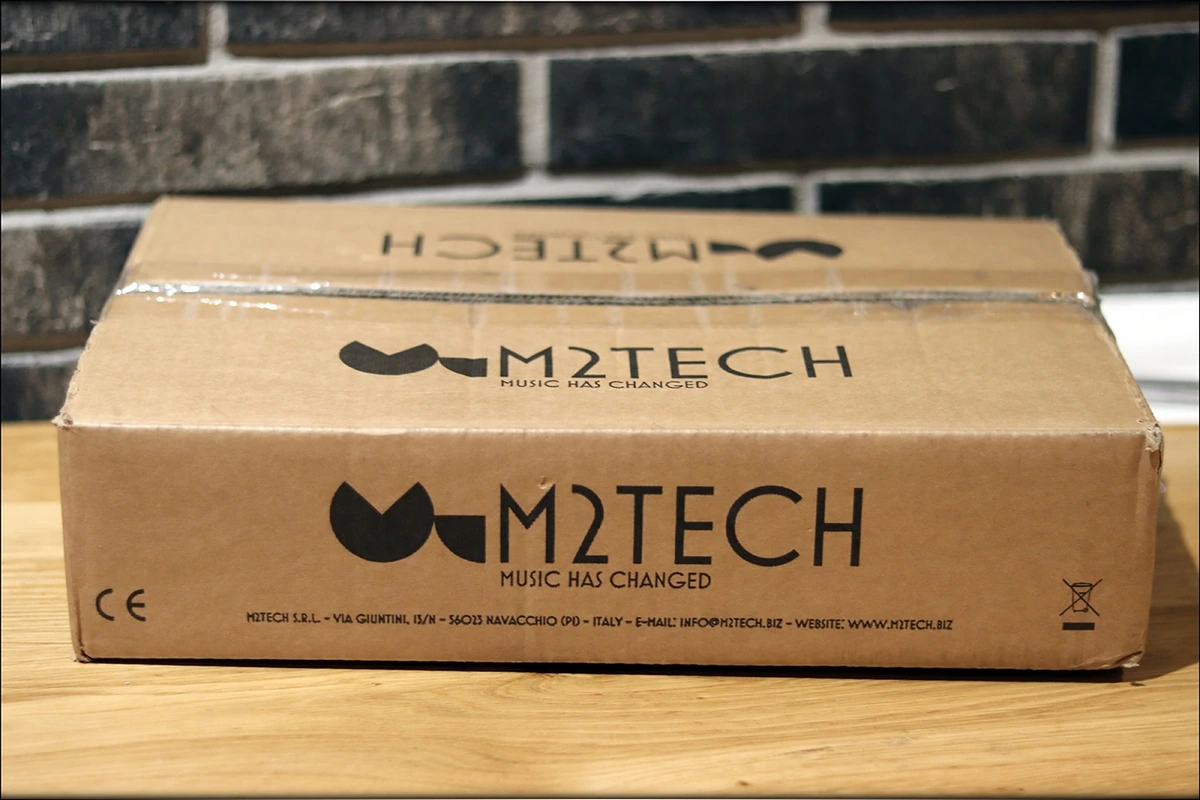
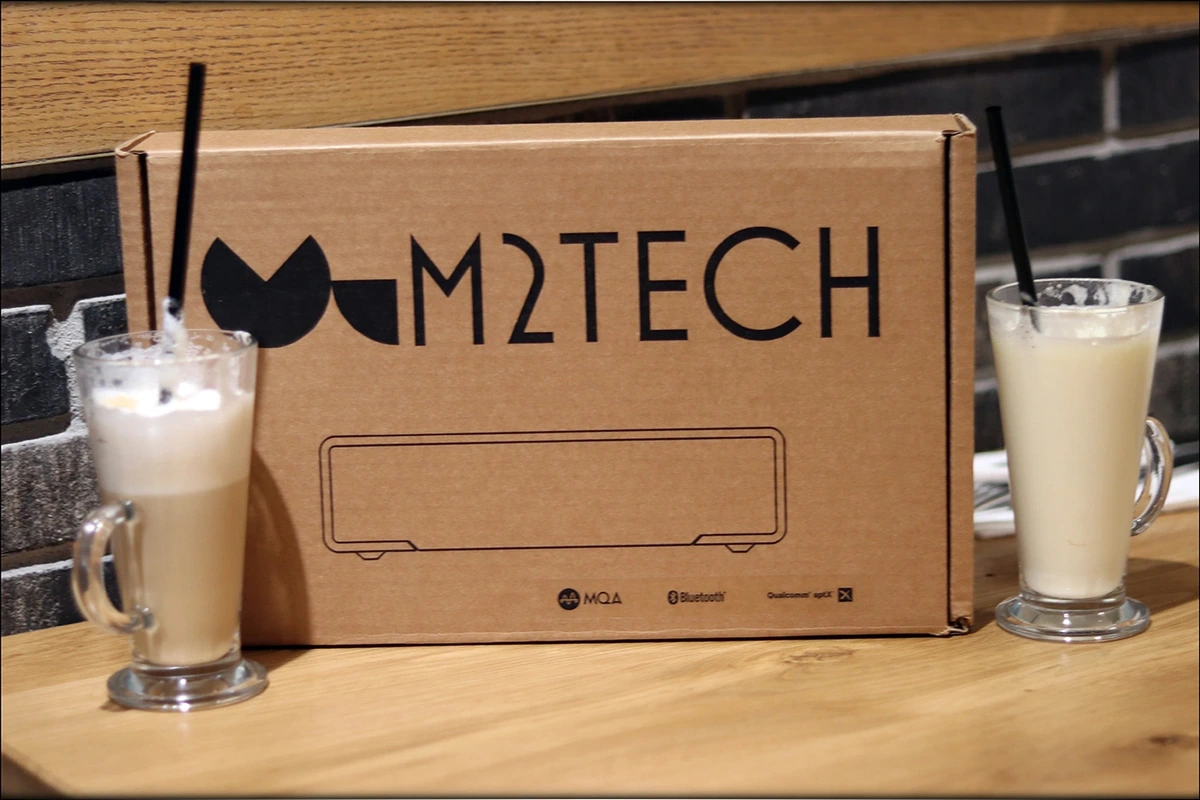
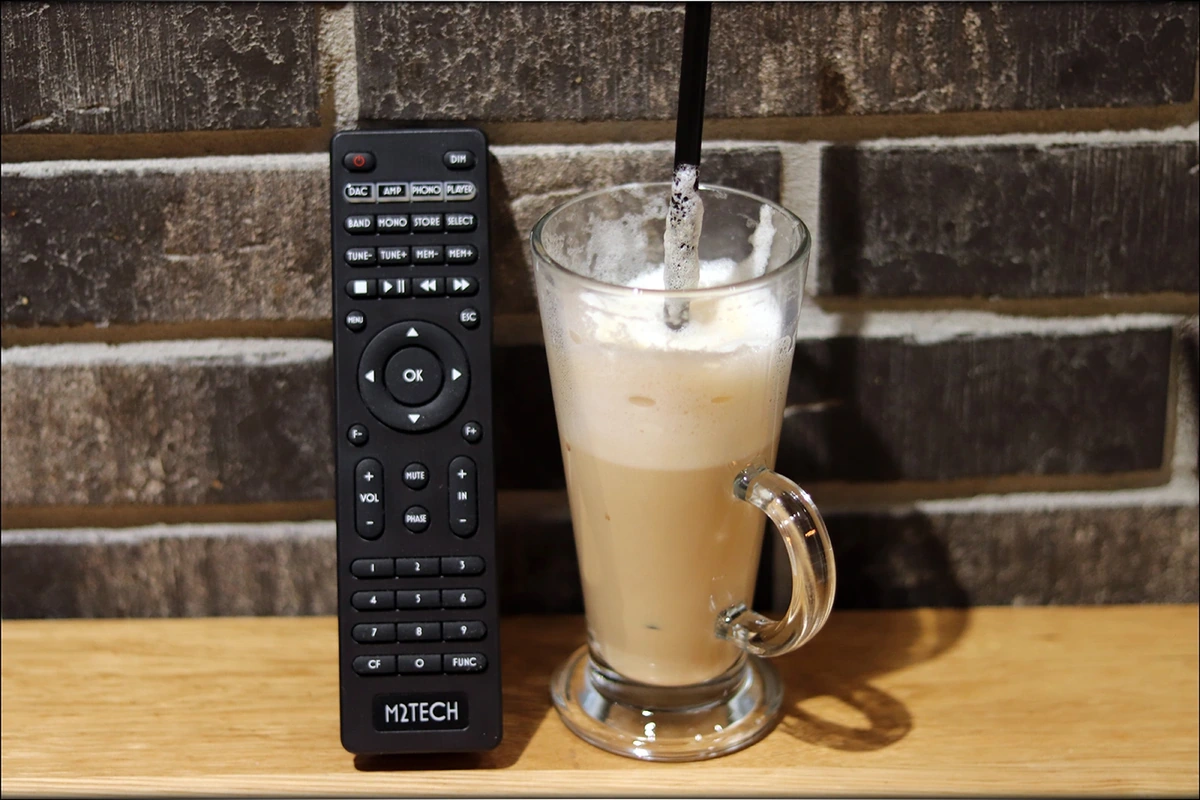
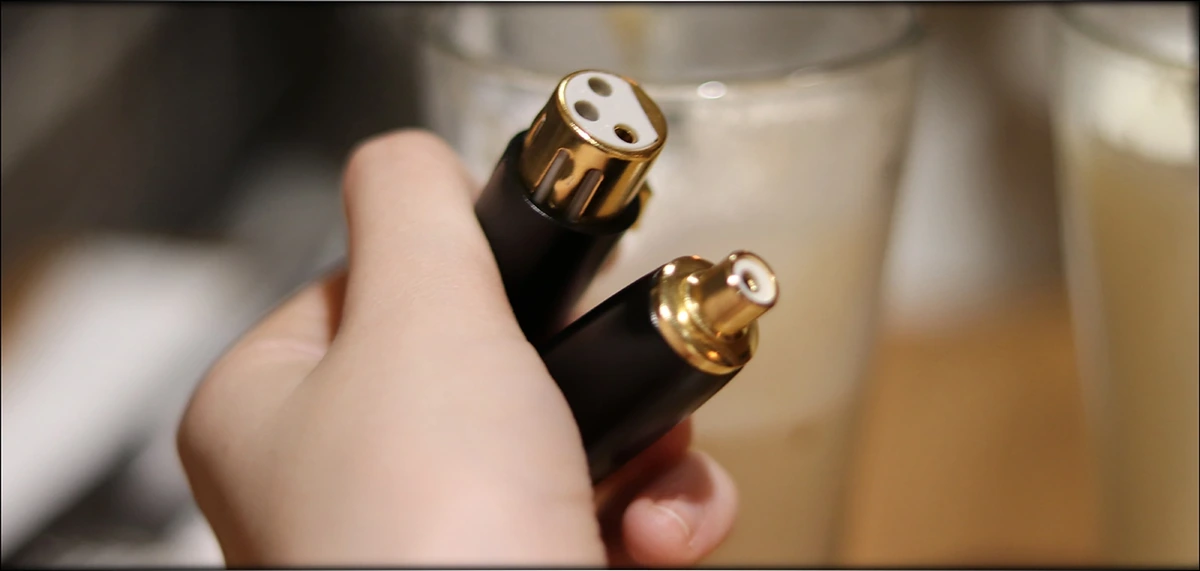
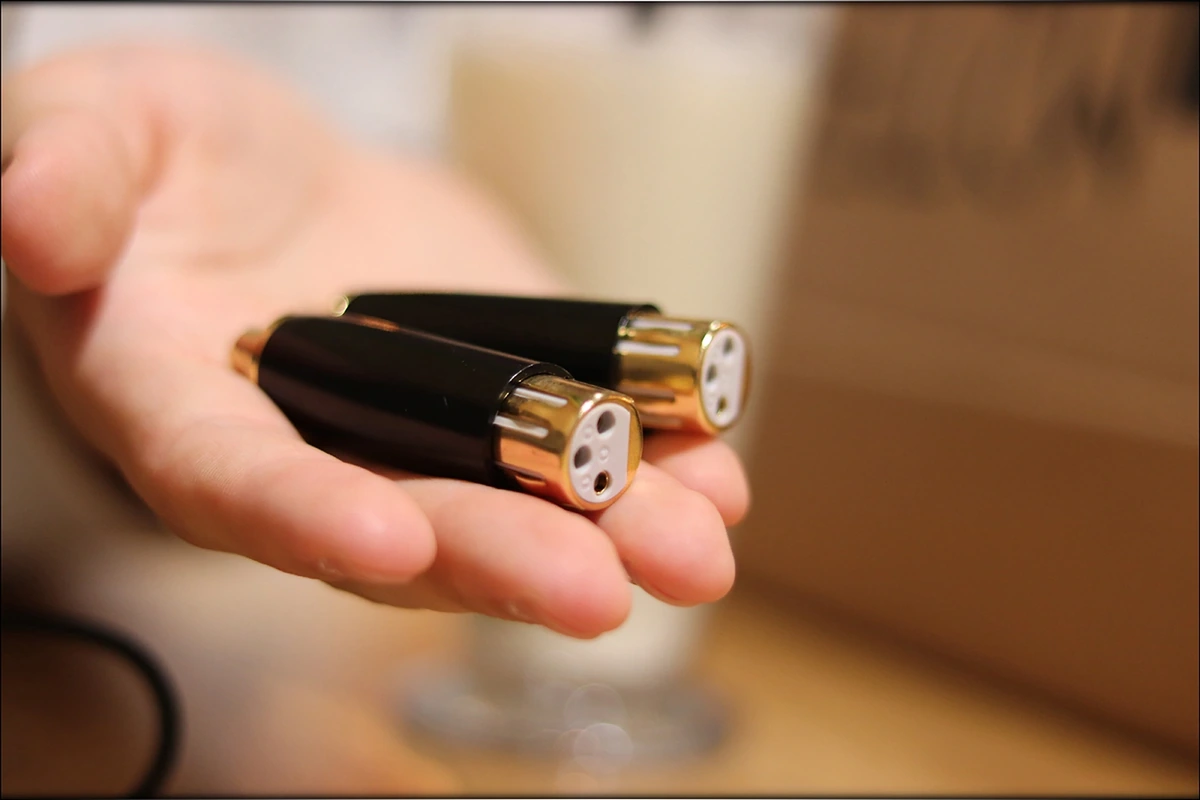
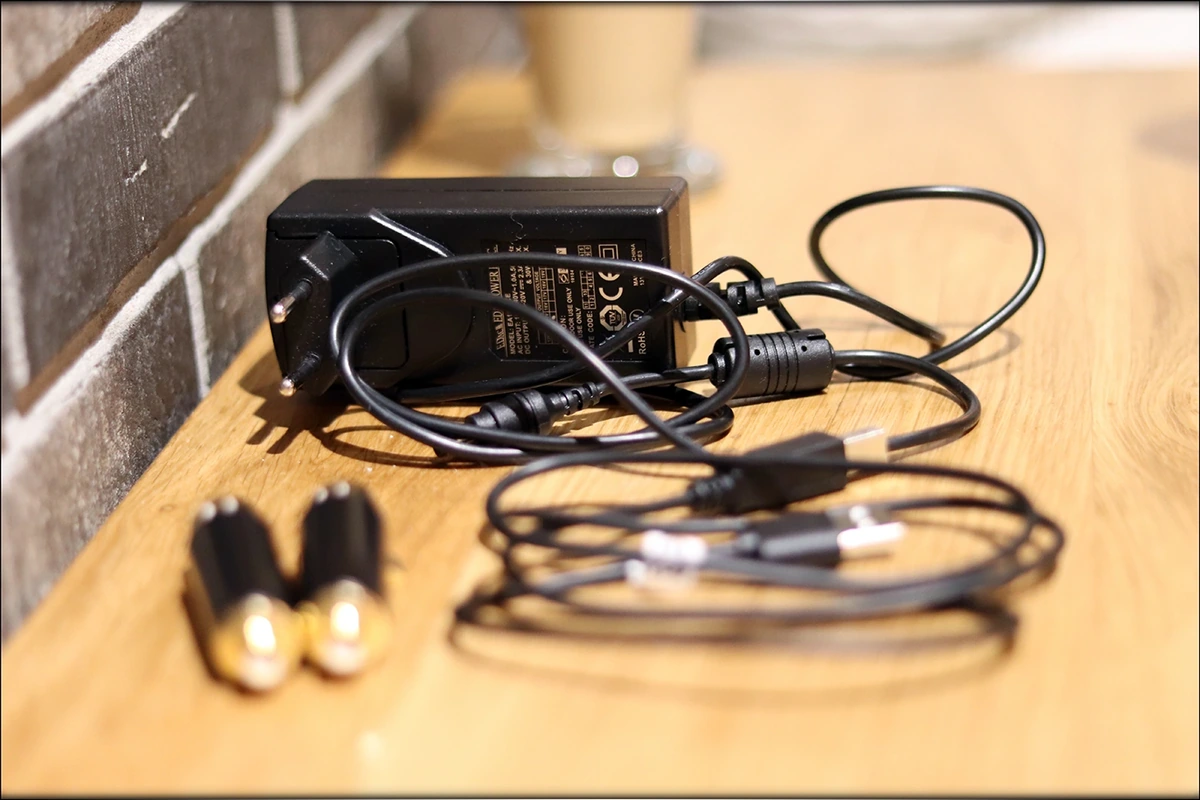
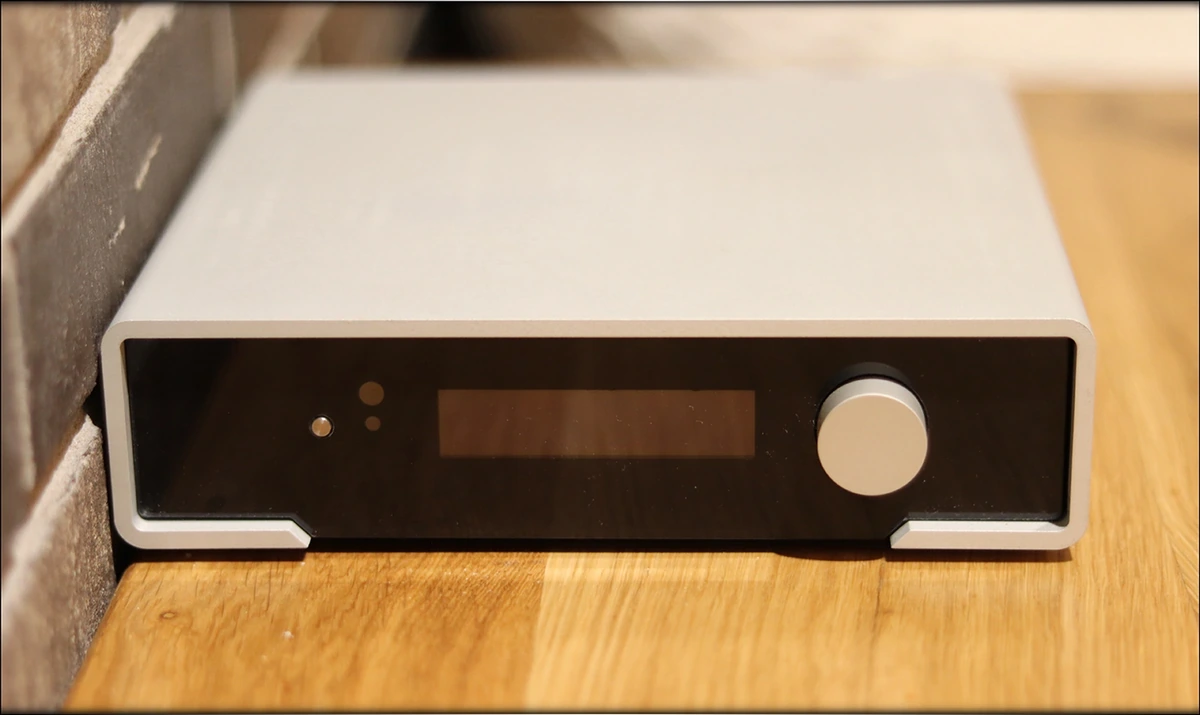
Besides the beautiful DAC unit, you can also find a power converter, which you can later replace with a better one, like a LPS, or a Linear Power Supply, as well as a USB Cable, and two of the rarest thing I’ve seen, at least to this point, which are Analogue RCA to XLR adapters.
Those came in really handy for other reviews as well, since I really didn’t have any in my home, and I haven’t seen any for sale in Romania.
If you want to check out one of the best Linear Power Supplies out there, M2Tech themselves make one, named Van Der Graaf MK II Power Supply, which should pair beautifully with Young.
The unboxing experience is fun, and as you will be able to read on the package, M2Tech products are not rebranded from another company, they are actually made in Italy, which made me even more curious about the Young MK III DAC even before first hearing it.
Technical Specifications
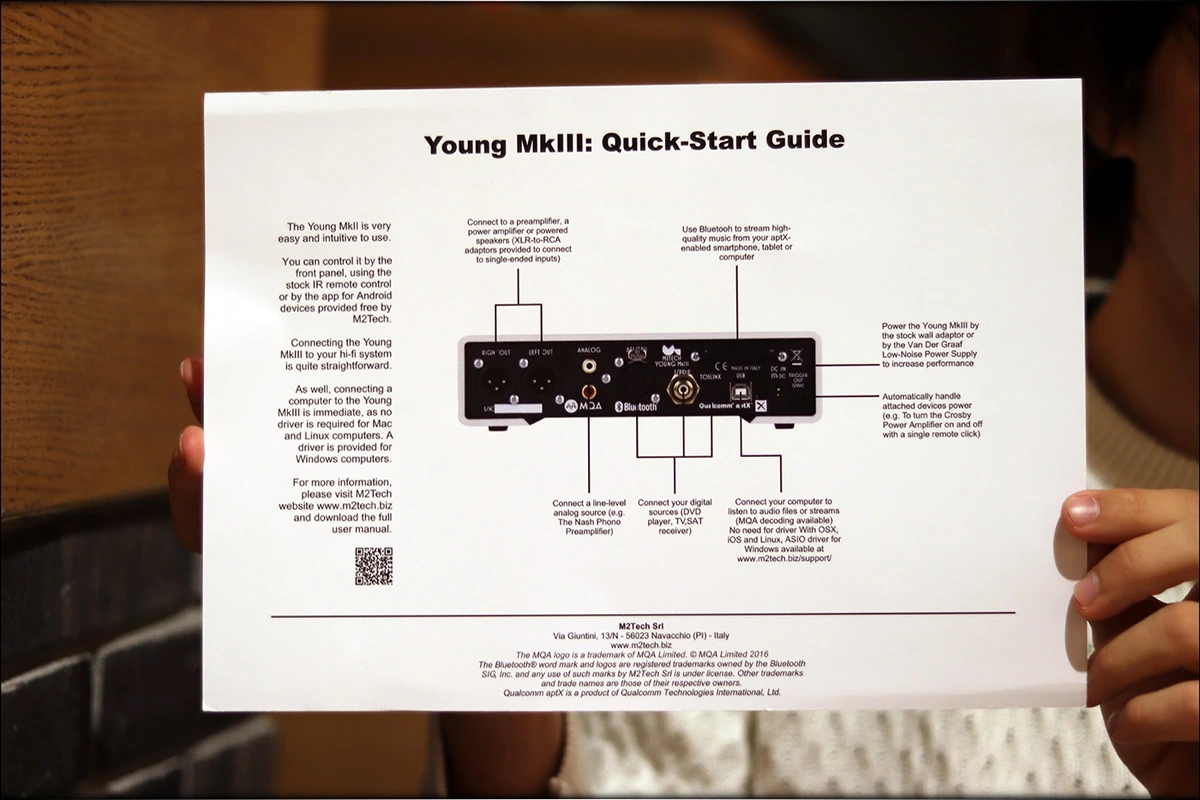
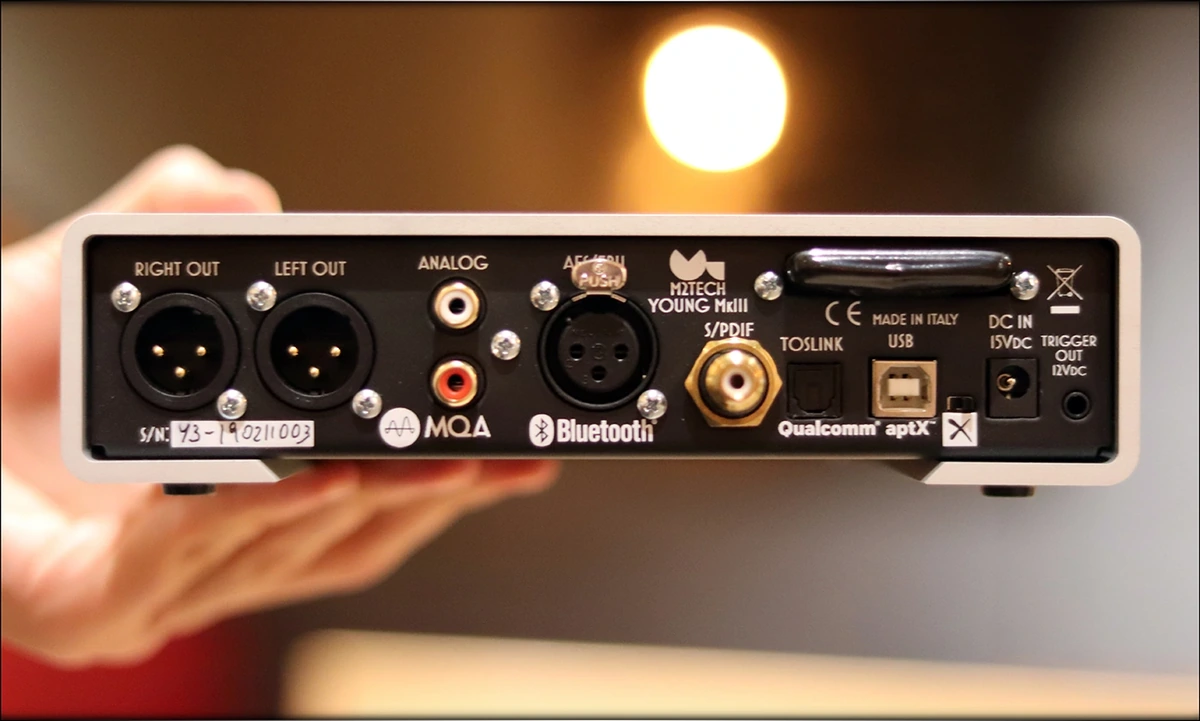
On the back, you can find two outputs, but just two, which are XLR, as the RCA analogue ports are actually inputs, and so is the USB Input, and the AES XLR, the SPDIF, and the Bluetooth Module. If there is something else that is an output, that is the Trigger Out, which is at 12 VDC, which basically acts as a way to start your entire audio system when starting up the Young DAC, triggering your integrated amplifier to start as well at the same moment. If there is any single way to describe the little Young DAC, that is “A lot of entries, but one single output”. I can’t say I see anything wrong with that, it provides a good usage scenario for the DAC, and everything works flawlessly. The RCA input is especially designed when you have something that doesn’t have an ADC unit inside, like a phono stage, which you can input to Young MK III to then output to your power amplifier, and to your speakers. If you want to keep things cool and disconnect from any possible electric noise, or any possible interference noise, you can always use the optical input at the back of the Young DAC.
Another interesting note about Young MK III which I’ve been able to note after using it for a long while has been that Young MK III doesn’t get hot at all during usage. It is actually a really cool unit, and although you won’t notice a lot of ventilation vents, besides the large metallic chassis, it will never get even warm during usage, so despite the warning M2Tech makes about not placing it on a hot surface or near other hot devices, you can safely do that and be happy about your setup, scoring big points for the design and engineering part of M2Tech.
If you’re starting to be curious what’s under the hood, there’s a PCM 1795 DAC, rather than an ESS DAC, which may be why Young manages to be not only really detailed, refined, but also really wide, yet without any digital glare.
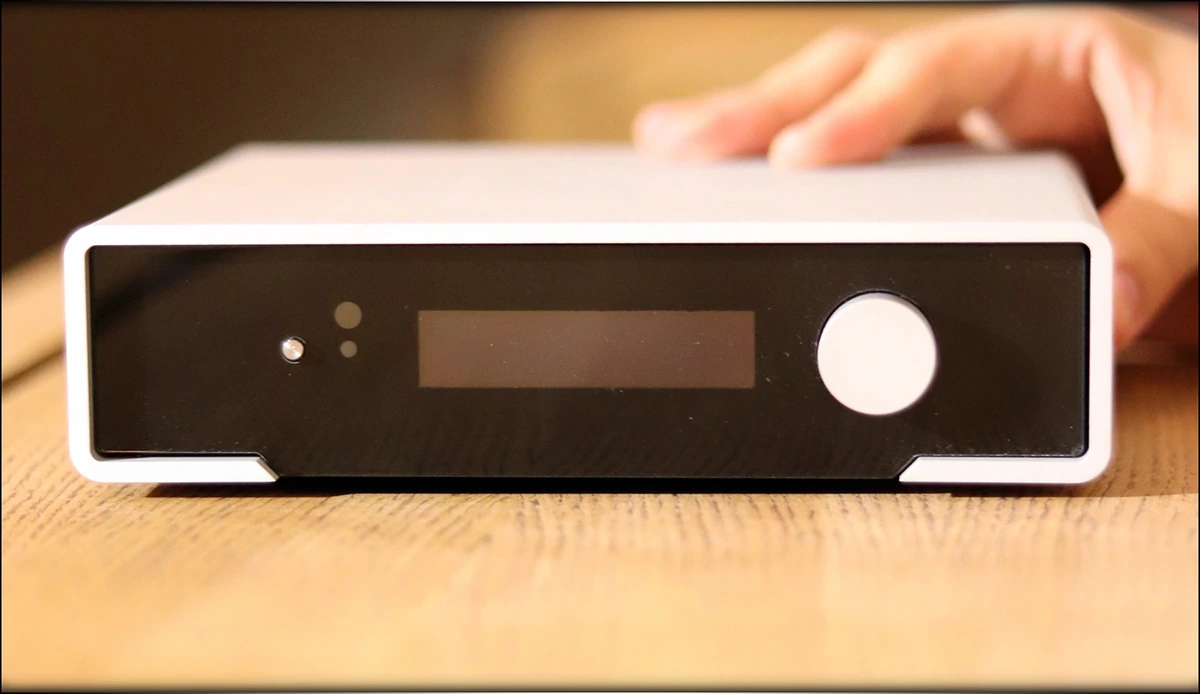
In terms of decoding abilities, Young is capable of decoding PCM up to 384 kHz in 32 Bits, DSD up to 256X, and even MQA files, so regardless of your favorite way of listening to music, you’ll have everything you may ever desire at your fingertips. ROON and Tidal are both able to recognize and use Young MK III natively, meaning that you never have to worry about software incompatibilities. It also runs natively on Windows, although you can install a little driver from M2Tech if you want to control some of its aspects without relying on the remote and the little display.
Speaking of which, M2Tech Young MK III has a beautiful yet small display which is really handy. It always contains everything spaced nicely, without any fluff. In this sense, if you want to see more, or a little spectacle, there are DACs that have VU Meters and such, but Young relies on offering you the current data rate, and the current data format as the main important aspects of using it.
Another important aspect of Young is that it doesn’t have a fixed maximum output of 2Volts, but is actually able to output a 5V line voltage, thing which you can configure from its settings. Most Amplifiers expect a line volume of about 2 Volts so make sure to set up the correct voltage for your setup.
The Power consumption of Young is extremely low, at 4W operational, and 0.23W in StandBy, which is connected to the reason why it doesn’t get hot at all during usage.
There’s also the APT-X Bluetooth if you’d like to stream some music while away from your DAC, and when I tested the connection I was amazed by the level of stability the signal had, along with how good it actually sounded. If you’ve been using Bluetooth for a while, you surely have noticed that sometimes it really cuts on the sonic quality, but in the case of Young MK III, it makes everything sound sweet, without cutting too much on the detail.
Sound Quality
When you first look at it, Young MK III looks rather small, compared to other DACs out there, especially if you’re used to the typical high-end offerings from other companies, but the first thought you have when first hearing its sound is “how can this sound so large?!”, and indeed, it sounds huge, but that’s not the only factor here. The entire sound could be considered Balanced, and it is so much more than the offerings of companies like RME and their ADI-2, which are overly warm and much less detail focused, than the much more clear and revealing Young MK III. Of course, a more balanced sound won’t compliment an already neutral system quite as much, but if you’re looking for the utmost transparency, Young surely knows how to present that.
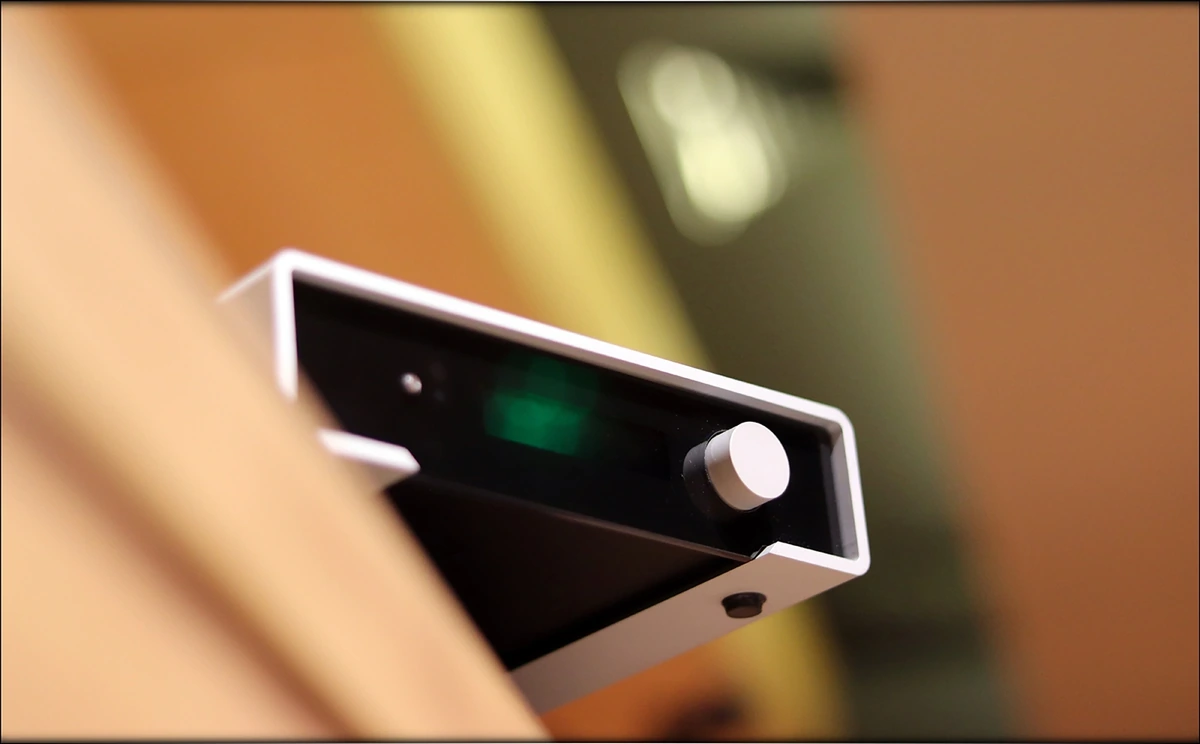
The bass is one of the deepest, most tactile, yet quickest bass I’ve heard in a DAC, especially at this price range. Considering that Young is priced at almost half the price of the Brooklyn DAC+, I can tell you that Young MK III sounds at least as quick in the bass. I never felt that the sound was too forward, but rather, it has an excellent extension and doesn’t shy away from giving you depth and impact, when the music calls for it. On music with a lot of lows, like that of The XX, or Die Antwoord, you hear a rattling performance from the bass, but you also hear excellent textures, indicating a really quick overall presentation.
The midrange is where things start to turn for the better with Young MK III, as it is just so incredibly clear and transparent, yet in a softer and not so in-your-face way. Basically, the midrange could be considered the focus of its sound, because it has a really wide, holographic and deep stage, which makes everything stand out nicely. The instruments come through with a really refined overall presentation, realistic and dynamic presentation, and a good amount of textures. This being said, Young doesn’t have quite as much punch as some other DACs, and if you prefer a forward sounding DAC, Mytek offers a much more forward presentation, but if you’re into a really elaborate and realistic kind of presentation that will envelop you with detail, Young surely knows how to deliver that.
The treble is another part of Young that surprised me and also made me fall in love with it, by providing a sparkle and clarity that I’ve been missing, and which makes both Rock and Metal sound just amazing. While some DACs like RME ADI-2 provide a toned down treble, that doesn’t have a proper sparkle, and while Mytek Brooklyn DAC+ goes for a more safe tuning, Young dares to act like a teenager, and rebel, to provide both an excellent extension and extension. This also helps if you love to have a lot of air in your music, as everything will sound much more open when played through Young MK III.
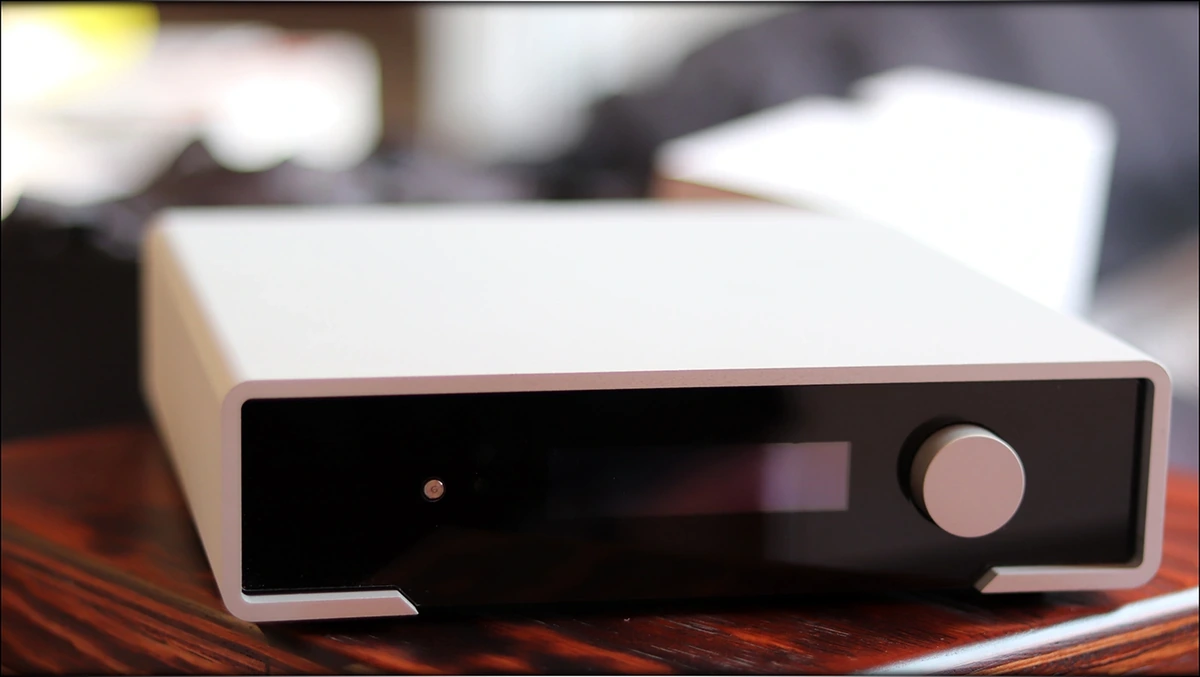
Now, you may be left with some questions about Young MK III, and how it compares to other DACs, but don’t worry, that’s what the comparisons part of this review is for. What is more important now, is to ask whether the sound has good dynamics, is punchy, and whether it has a good amount of texture or not. Well, when it comes to dynamics, Young is pretty dynamic, I felt that Mytek Brooklyn DAC+, for example, was more dynamic, but Young MK III manages to deliver a more lively presentation still, because the slightly soft midrange combines with the good treble sparkle really paints a more sensible image, which works well especially for more emotional music.
Desktop Usage
Well, you really are going to use Young MK III for desktop, and it was really built and designed for it, but it was also made to not occupy a lot of space, and its ergonomics are actually better than those of some portables I have around.
The thing is, for a unit to be a good Desktop unit, it doesn’t have to just be good and to sit on a desk, it has to also look good, and not have a large footprint, it also needs to stay cool during usage, because that affects how you can stack the unit. A good desktop unit also needs to have enough inputs and outputs for your entire system, otherwise you’ll be left with something that you just can’t use the way you want.
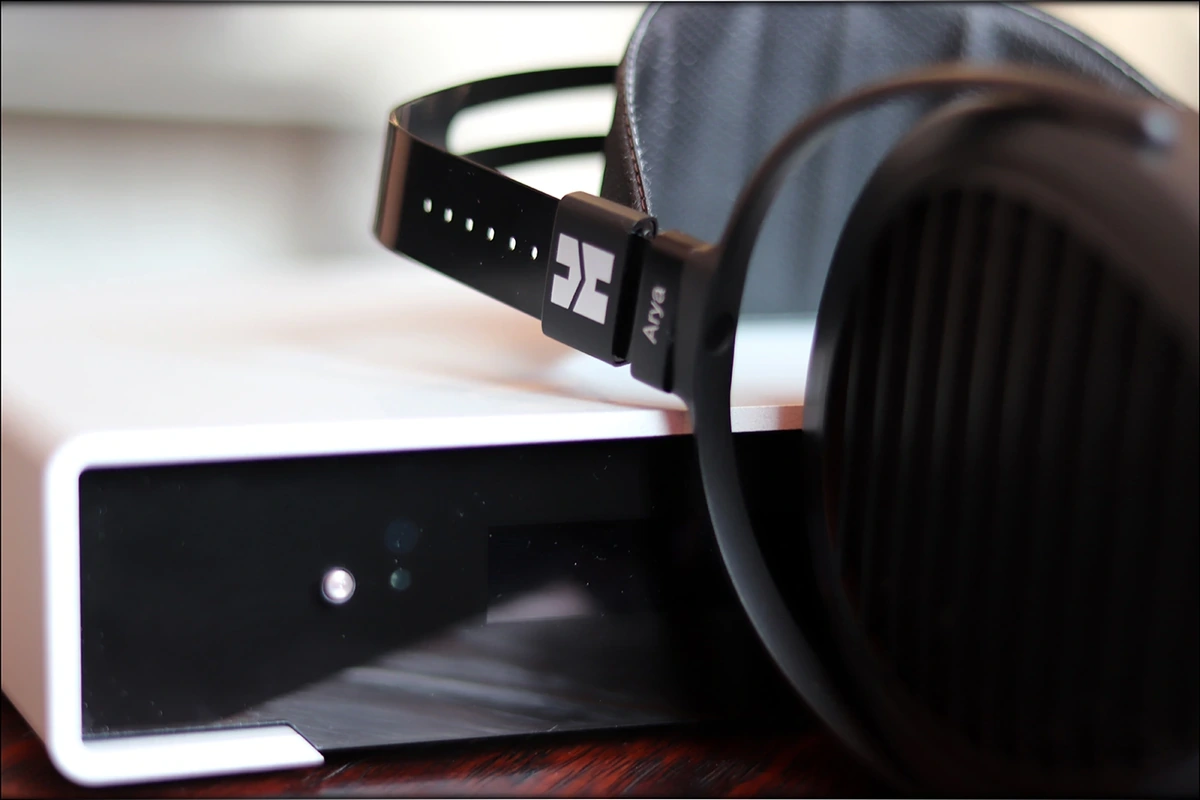
With headphones, you have to imagine connecting Young MK III to a headphone amplifier, like Wells Milo, then to a headphone, like Kennerton Thror, to run M2Tech Young MK III as the main DAC in that setup. In a situation like this, you get a really good sonic performance, but also a beautiful overall aesthetic for the design.
You can also use Young as the DAC when runnig speakers, like Edifier S1000DB, Audioengine A5+, and Taga Harmony HTA-800, along with its Amplifier. This is the best part, for me, actually, because when considering a DAC, you have to think things forward in time, you may get a more studio-like speaker, or you may get a full sized speaker amplifier. Then your DAC needs to match well with the Pre-AMP, like the Audio-GD Master 19 or something like Feliks Echo.
For a Dekstop unit, Young has a good number of inputs, and even has APT-X Bluetooth, so if you’ll be using your smartphone to send a signal to it, or a DAP like iBasso DX160, you will be able to enjoy the music without having to struggle to change the input from the remote of Young. On this note, Young also has a nice display which helps you configure it, and also comes with a remote, basically having everything an elegant and sustainable DAC unit should have.
Comparisons
The main comparisons for Young MK III are Mytek Brooklyn DAC+, Aune S6 PRO, and iBasso DX220 when used as a DAC. I decided that a little bonus comparison with RME ADI-2 will come in really handy, turning this review into a more sensible battlefield between Mytek Brooklyn DAC+, M2Tech Young MK III, and RME ADI-2.
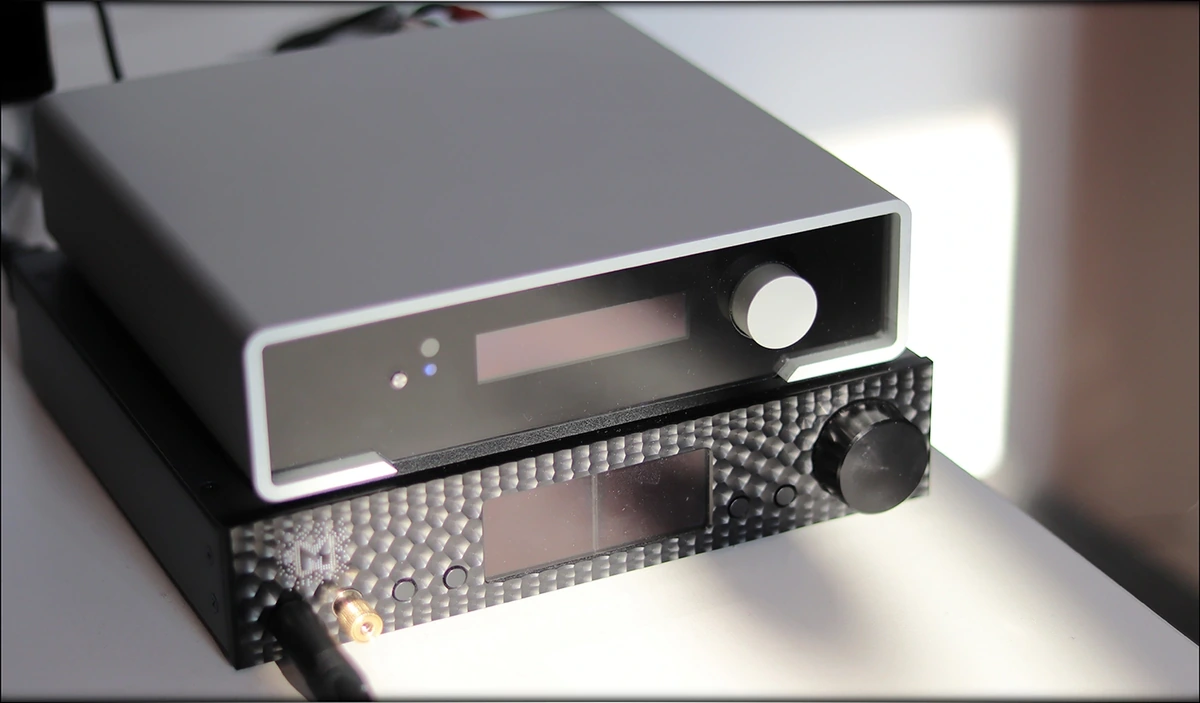
M2Tech Young MK III vs Aune S6 PRO – Here, we start with a slightly unfair comparison, as Aune S6 PRO is in a different price category, being priced at about 600 USD, and having a performance that is really good for its price point. This being said, I considered some people aren’t looking how Young compares only with units from its price point, but also units from different price ranges, as it helps you make a decision on whether Young is worth the further investment above Aune, for example. In terms of build quality, and features, Aune is larger, takes more space on the desk, and is heavier. It doesn’t get hot either, and is also built well, just like Young. Now, the sound actually has some similarities between S6 PRO and Young, there are a lot of traits that are similar, like the huge soundstage, the balanced-neutral signature, and the excellent performance for the price. This being said, you can notice the increase in refinement, micro-details, textures and overall dynamics with Young. For gaming, both are excellent, and while S6PRO has some features aimed especially at gamers, Young has bonus dynamics which help a lot with intensive gaming scenes, at least if you like more story-rich intensive games. Both DACs offer spot-on stereo imaging and both offer a good number of inputs and high quality outputs, but S6 PRO has both XLR and RCA outputs, while Young only has XLR outputs, but it does come with adapters, so you don’t need to worry about that. There is another thing that S6PRO has, it is the headphone output, but since it has a pretty low power output, I tend to recommend it way more as a DAC, where it has a stellar performance, rather than a headphone driving unit. This being said, if you’re wondering whether Young is also stellar, the answer is yes. Aune S6 PRO is really great at 600 USD, but if you have the cash to invest more, you will hear the differences in refinement, clarity and precision of Young.
M2Tech Young MK III vs iBasso DX220 + AMP7 – iBasso DX220 is a portable unit, rather than a desktop DAC, but it almost has the performance of a desktop DAC, and even has a full-fledged Desktop DAC unit inside. It makes sense that I would consider using it inside a full sized desktop setup, and what’s more, it makes sense that I’d have lots of fun using it like that. The only downsides are that, a device that small does look a bit tortured with all the cables going on inside it. But what’s fun is to hear how far portables have come, and how something like DX220 can come close to a proper desktop-class DAC like Young. This being said, there still are differences, especially if you’re used to live music, where Young gets much better in terms of having a more refined, softer, yet more detailed overall presentation. DX220, when used as a DAC, feels like a full sized desktop 1000 USD DAC, but when you add Young to the mix, which is 50% more expensive than DX220, you get a presentation that lives up to being more natural, and considering that DX220 has an ESS DAC inside, it does feel like it is a touch brighter. I don’t dislike a bright sound, and it really compliments my Rock and Metal music, and Japanese-based Anime music as well, so I do love DX220 to bits, but Young does sound a bit more natural overall, where DX220 comes through as slightly brighter, and also slightly sweeter. The best detail award here can go to Young, but you should know that both devices have the same decoding abilities, including ROON and MQA decoding abilities, which make both killer devices in terms of future. Young has more inputs than DX220, though, where DX220 has more digital outputs, and DX220 can output digital signal for Young if you wanted to use DX220 as a transport which is one of its many features.
M2Tech Young MK III vs Mytek Brooklyn DAC+ – Mytek Brooklyn DAC+ is probably the most fair comparison I could do at this point, since it has the most similar price point when compared to Young MK III, but what is the selling point of each? Well, Brooklyn DAC+ is a full sized desktop DAC unit, with a built-in headphone amplifier, which is actually really good, and it also has an OLED display, which has a visual of two VU Meters that help you get a bit of a spectacle when listening to music. The inputs and outputs are similar between the two, but Mytek included the RCA and the XLR outputs at the same time, while M2Tech lets you choose between the two, by having adapters rather than having the RCA outputs at the back of the device. This is actually understandable, since the unit is smaller, and there simply wasn’t enough space for both. This being said, the fun part is that both have the same good number of inputs, so there’s no shortage there. The differences start to appear when it comes to the units, because Mytek gets much warmer, compared to Young, which stays really cold to the touch. But the sound is also like that, with Brooklyn getting warmer, more euphonic, compared to Young, which is more neutral, and softer. The price difference amounts to having the headphone output and the amplifier part in the unit. The headphone part of Brooklyn is actually excellent, and is really worth investing in it, if you’re using headphones.
(Bonus Comparison) M2Tech Young MK III vs RME ADI-2 – Here, things will get out of control, especially because there are lots of RME Adi-2 lovers out there who may disagree with me, but I actually felt that Young is much more natural than ADI-2, which regardless of the settings you’re using, sounds considerably warmer and thicker, with the treble rolled off a bit. I actually am not that big of a fan of the overall sound of ADI-2, as it places that warmer and thicker sound, with a stronger bass, much higher than the clarity and detail of the DAC. If those two were about 300 USD each, I probably wouldn’t have considered saying anything negative about either, but at the price point of each, I should complain about each as much as I can, and well, with ADI-2 I can say a bit about what doesn’t really sit well, not necessarily because it is not awesome in its own way, but because I think that clarity, precision and overall detail should be held higher after reaching a certain price point. RME ADI-2 isn’t bad, but when comparing it with something like Young, you hear that the clarity increase is noticeable, the better overall detail and micro-detail is audible, and the larger, wider, deeper stage, with better stereo imaging are all differences big enough to want to invest in Young MK III.
Pairing
For the pairings part of this review, I decided to go with something a bit more eccentric and rare, so here are some pairings that you never expected to see on a Review about this DAC. The first setup, is Young MK III leading to an Audio-GD Master 19 Headphone Amplifier, Leading to a HIFIMAN He6SE Headphone. The second setup is Young MK III leading to a Roksan Caspian M2 Amplifier, then into a Buchardt S4000 Speaker setup. The third setup is Young MK III leading to a Feliks Euforia Amplifier, which powers a Rosson RAD-0 Headphone. I added two headphone setups, which are more rare, because Audiophile-Heaven has a lot of headphone setups, and I wanted to highlight what a difference a good DAC can make in a headphone listening setup.
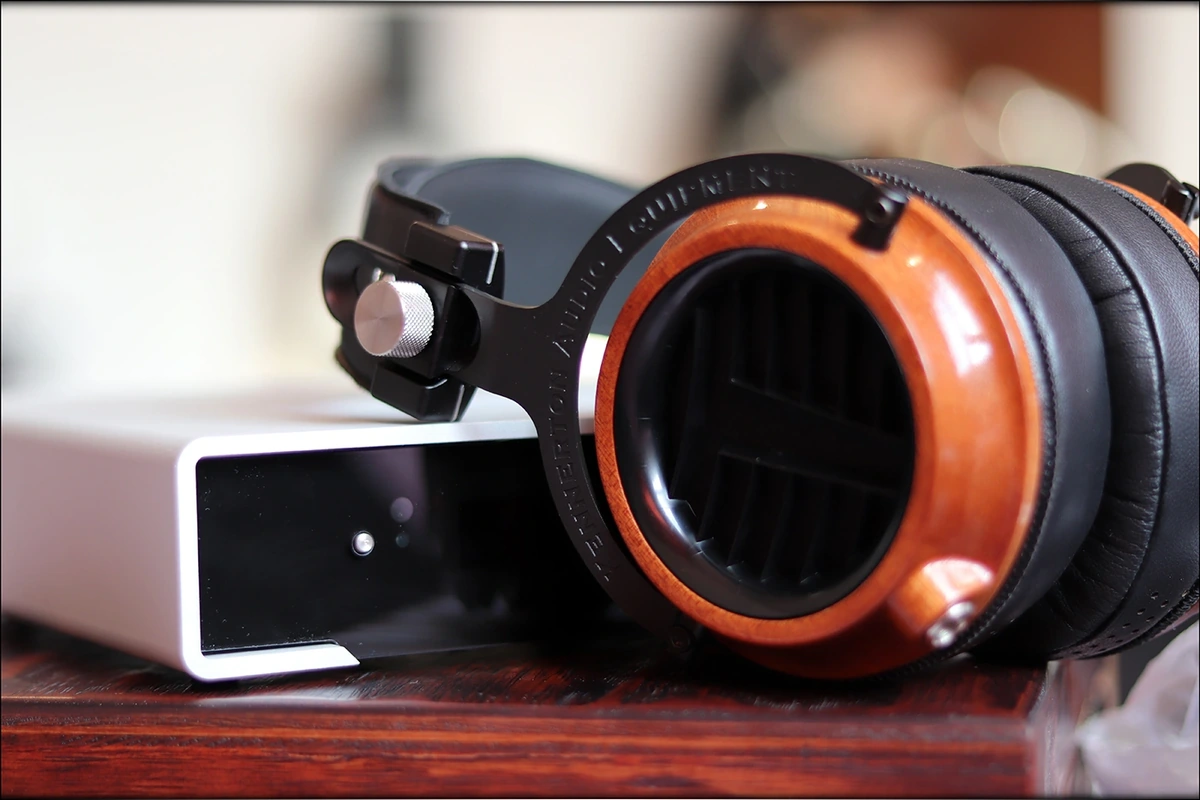
M2Tech Young MK III + Audio-GD Master 19 + HIFIMAN HE6SE – HIFIMAN HE6SE is one hard to drive headphone and well, Audio-GD Master 19 is capable to produce enough power and punch for it, and in fact, it is one of the very few amplifiers capable of really controlling HE6SE, and giving them the dynamics and punch they need. In fact, after hearing this combo, Master 19 became one of my favorite AMPs, and is actually holding its own in a fight against other really amazing flagships. Of course, I invite you to click on the video review of Master 19, and wait for the full written review on it. About He6SE, there are two video reviews already live on Audiophile-Heaven, and one more is coming really soon, but this time the written one right on this very website. In terms of actual sound with the pairing, I tried this combo with both Young MK III as a DAC, but also with Mytek Brooklyn DAC+, and other DACs I had around. The overall sound of Young MK III makes itself remarked in terms of clarity and detail. The overall tuning is neutral, with a touch for treble and bass extension, and although HE6SE itself doesn’t have a lot of bass, when driven by this combo, it can really punch you in the face better than a boxeur, and also have the dynamics to make you feel like part of the crowd when listening to a live concert.
M2Tech Young MK III + Roksan Caspian M2 + Buchardt S400 – Of course, most people are going to connect the Young MK III DAC in a speaker setup, and Buchardt S400 is just the speaker to reveal how wide Young really is, and how well it pairs with a speaker and an integrated amplifier. Roksan Caspian M2 is truly amazing in every way possible a true champion of Integrated Amplifiers, especially in that price point, with excellent overall driving abilities, and has a ton of inputs, and a really nice overall dynamic, punchy sound. Young MK III has a clear impact on this overall setup, by providing good soundstage, a really wide feeling, with a lot of air, and excellent dynamics as well. The midrange is a touch soft, so you don’t have to put up with music that’s too forward sounding disturbing, rather everything coming through with refinement and without hard edges.
M2Tech Young MK III + Feliks Euforia + Rosson RAD-0 – RAD-0 is a headphone I should write way more about, and wink wink, there’s a full written review about it coming soon. In terms of overall power and clarity, Feliks Euforia is just the Amplifier to compliment the already sweet and clear RAD-0. When it comes to the DAC, since both Euforia and RAD-0 are a bit warm and thicc, having a more neutral DAC surely helps balance the entire setup to make it both musical, yet clear. Having too much of warm and thick, even if you enjoy that signature, is going to make things too warm and lose detail, and precision, but Young makes sure that doesn’t happen, and instead, the setup manages to give its maximum of musicality, typical analogue sound, yet stay the maximum clear and crisp it can, provide the most refinement, micro-detail and dynamics possible.
Value and Conclusion
Of course, the value of a product like Young can be argued about always, because it costs quite a bit, but at the end of the day, it is packed with features, can decode basically everything under the sun, has Bluetooth, and even is capable to keep its cool while doing all this work, making it a DAC that really earns its place in the world, also making a name for itself for having a good performance for the price asked, at least if we talk relatively when it comes to the high-end part of the audio.
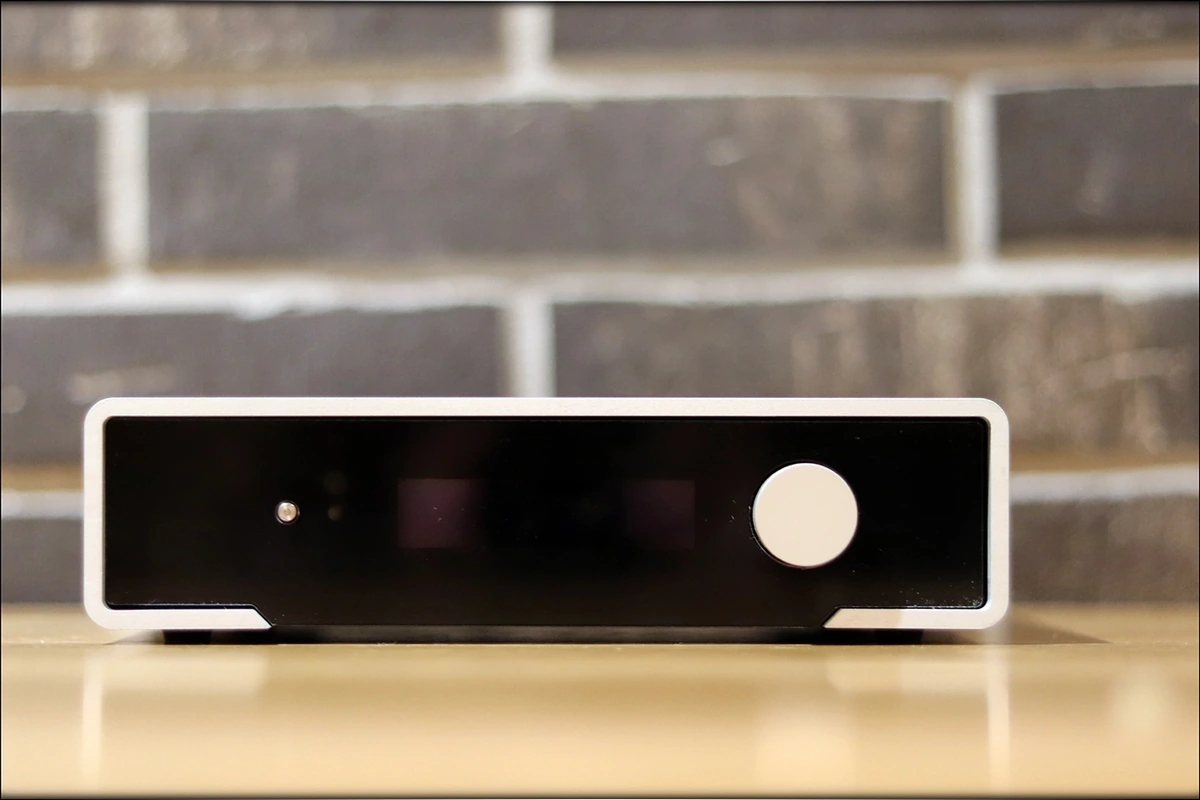
In the package you will find the basics you will need to use Young, including a power adapter, a USB Cable, and two adapters, from XLR to Analogue. While most users are probably going to have the proper cables around, including XLR cables, and XLR inputs on their amplifiers, at least for me, who has a lot of devices that rely on RCA Analogue inputs, those adapters have been a true blessing.
The build quality is stellar, with a beautiful chassis, made to last a war, and with a design that keeps Young cool even while in intensive usage, and while decoding either DSD, MQA or Hi-Res PCM, this unit literally keeping the temps down to not even warm to the touch. Even more interesting, there is a large number of inputs, so regardless where you’d like your music to come from, you’re going to have an awesome time. There are a lot of abilities this little DAC has, including Bluetooth inputs, and having a voltage of maximum 5 Volts for its output, which while not exactly typical, will surely come in handy for some users.
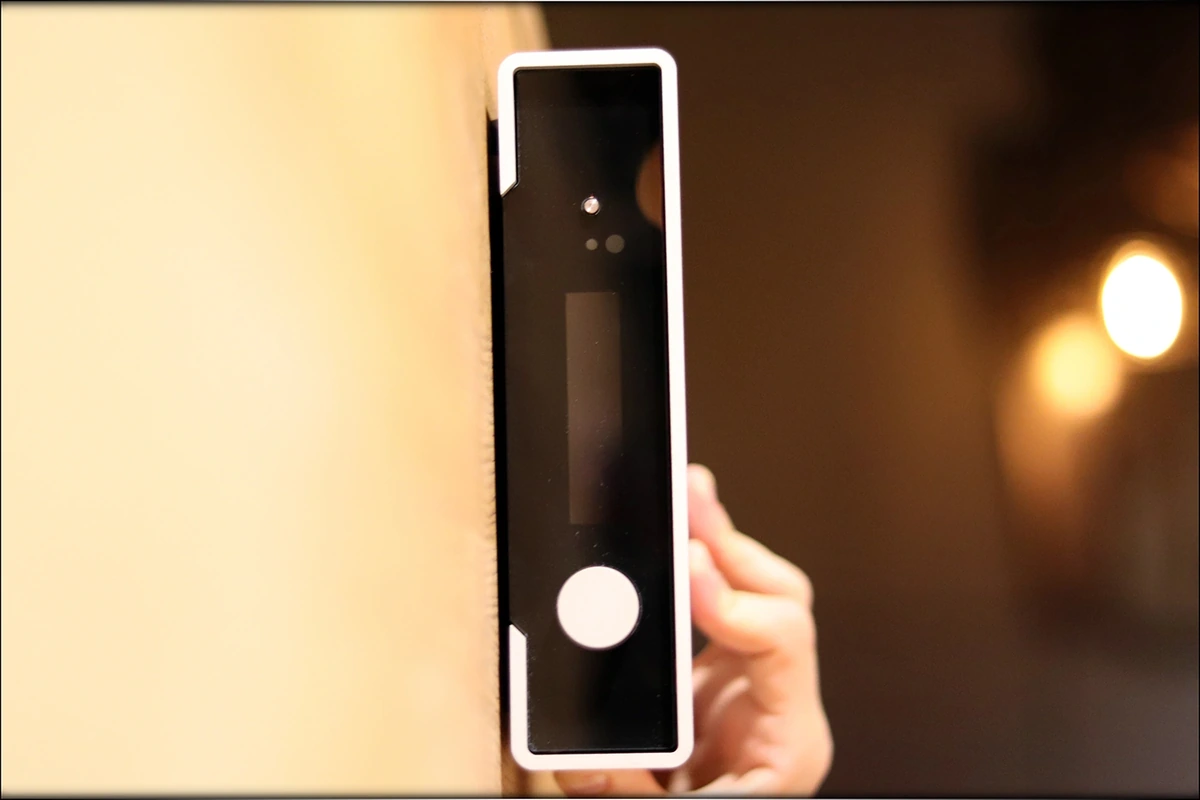
The sound is very balanced, well extended both ways, with a good amount of depth to its bass, good treble sparkle, and a clear, clean, wide and deep midrange. The textures are there, but the DAC doesn’t force any detail on you, and while the word “Analogue-Sounding” has gotten abused by audiophiles quite a lot, I feel it deserves a mention here, because the slightly softer details of Young are exactly what you’d call Analogue-Sounding, a sound that has everything, clarity, detail, but doesn’t shove those in your face, but rather manages to have those there, present them to you, without keeping its musicality.
Before the end of this review, I am going to add M2 Tech Young MK III to Audiophile-Heaven’s Hall Of Fame, because it is an amazing DAC, with a lot of inputs, clean, crisp, wide and balanced sound. The build quality makes it stand the test of time, and the good engineering and design helped it keep its cool during my tests, including when decoding Hi-Res files.
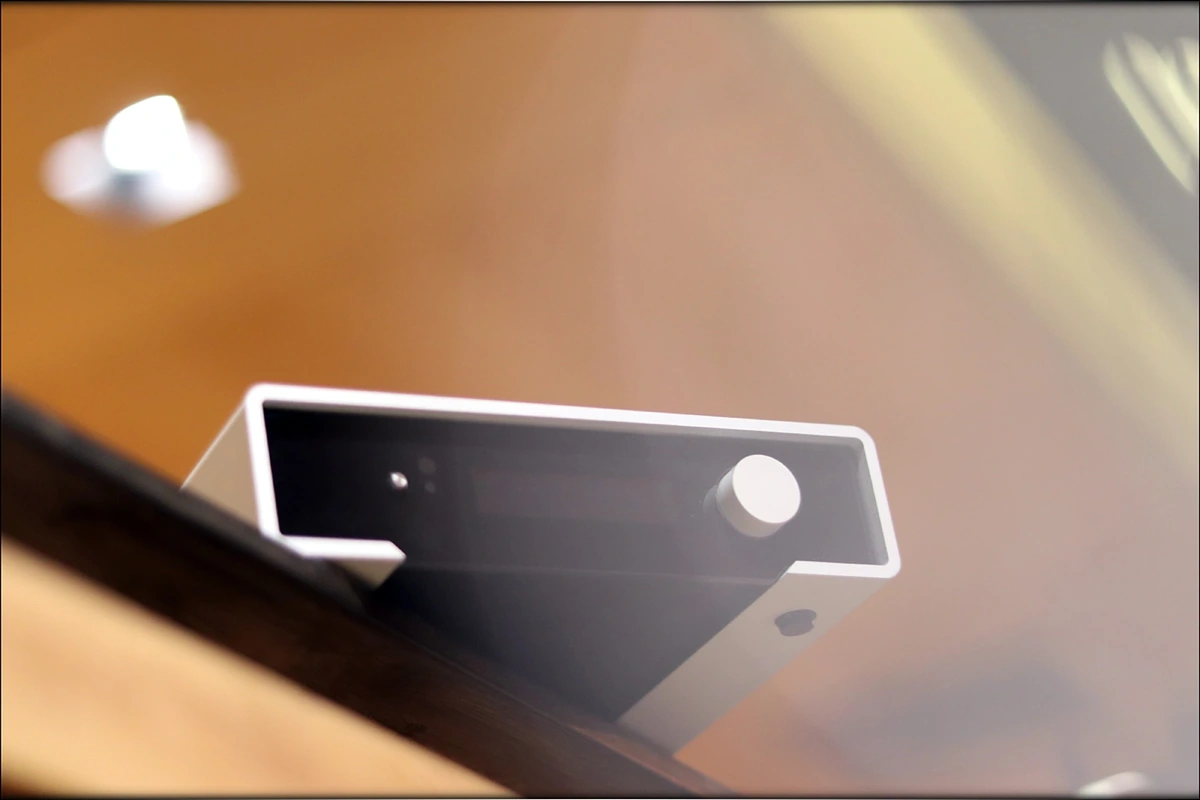
At the end of this review, if you’re looking for one of the best DACs out there, especially below the 2K USD price mark, M2 Tech Young MK III really deals a blow for those looking for a musical, wide, balanced-neutral DAC, with a lot of features and a good build quality.
Product Link
You can’t really purchase M2Tech Young MK III directly from their website, so I would recommend contacting one of the Authorised Distributors. For USA, you can get M2Tech products form www.amazon.com, once they are back in stock here: https://www.amazon.com/s/ref=as_li_ss_tl?k=M2TECH
--- Please remember to stay safe, and always have fun while listening to music!---
- If you have a dime to spare, please donate, and help us! It would make the day brighter for me and my wife-
Full Playlist used for this review
We listened to more songs than those named in this playlist, but those are excellent for identifying a sonic signature. I recommend trying most of the songs from this playlist, especially if you’re searching for new music! The playlists are different for Spotify, Tidal and Youtube, and based on the songs I enjoy and are available on each!
https://www.youtube.com/playlist?list=PL_cjBXGmwSHSdGcwuc_bKbBDGHL4QvYBu
https://open.spotify.com/playlist/5J3oloz8Riy9LxEGenOjQ0?si=979ba4f082414be7
https://tidal.com/browse/playlist/330fd544-8e5b-4839-bd35-676b2edbb3d5
--- Contact Us ---






Super nice review! I ordered one locally and I love it! Thanks a lot for sharing the review!~
Hi there! This article could not have been written much better! Thank you so much for all your effort and honest takes on those products!
Love your take! Decided to go for something else, but went for a listen on this one, and it sounds exactly as you described it
What’s up mates, its wonderful fully explained, keep it up all the time.
I got one baed on your review! Hoping you’ll be reviewing more stuff from M2Tech, the product is fairly good 🙂
Excellent review on a really good product
Excellent article! Also really nice shots, I can see your website getting better and better~
Really amazing review! Loving your detailed explanations and impressive photos! Keep it up!
Thanks a lot for your detailed take on the Young! I decide to get it for my recording studio after reading your review. Looking forward to reading more, especially speakers that you’re using!
Such a nice review, George!
Sounds like you were having tons of fun with the Young MK III, happy to see you’re posting more reviews these days 🙂
Thank you so much for your honest review. It is so hard to find a really honest review on this one, most of them call it smooth or natural, while you go right to the point and call it as it is, a bright DAC.
Thanks a lot, this one helped me decide on my next DAC
It is really awesome to have one honest reviewer out there. Stay strong and keep up the good work, George! Been enjoying your reviews, and I can’t wait to read more once I get more money to make some upgrades
George, this is one of the bes reviews of the M2Tech Young MK III and any M2Tech DACs to date! Thank you so much for all your hard work, and hope to see you reviewing more of their DACs soon
Finally a good honest review on the Young MK III. Everyone kept calling it warm or modest, but it is probaly the brightest thing I ever heard in my entire life. Thanks a lot for sticking to being honest!
Thank you so much for the honest take. Lots of shills out there that won’t call things by their names. I don’t even understand why you would midescribe something, since some people may want exactly what you’re decribing… This one is bright AF, but I wanted it for my warm Spendor Speakers, so thanks a lot for recommending it.
Hello can I ask what you use as a source of sound when testing dac’s.Thank you.
Hello there! I usually rely on my PC computer, which is a custom made workstation, which I also use to edit my videos and do all of my other work. Also my GF’s lappy which is a midrange Acer.
Is it worthwhile to update/replace my first m2tech young with this nr3 one?
Hi there,
Not really, although both are great, I wouldn't replace the original, the newer one is great, but if you want a different signature, I'd consider the DAC+ from Mytek and other options!
Hello,
Is this DAC better than ProJect prebox s2 digital when we look at it being almost 4 times more expensive? Is it smarter to invest that difference in say a better amp? I have had a Project prebox s2 digital for almost two years and the only complaint is the washed display. I kept it mostly on all the time, and now the information on the display is yellow and no longer white. By the way, I am very satisfied with the sound quality. And I use it with a linear power supply. I know I must hear dac like Young mk3, QUtest, RME adi2, Topping d90, to find if they are better enough than my S2 digital..
Hello there! The difference exists, and it is better, but it would be better to invest in a better AMP or a better HEadphone / Speaker. Usually, when investing, you always do like this Headphone / Speaker > AMP > DAC > Cables > Accessories. This is the commonly agreed scheme, and as long as you're happy with the S2 Digital, you may not need an upgrade right now at the DAC level. I reviewed the s2 digital as well, and loved it, but the Young MK III has a brighter treble, more air, more instrument textures, and a wider soundstage, being probably the most wide sounding DAC I reviewed to date. You could aslo say it is the most holographic one. Mytek Brooklyn dAC+ may be a better overall deal if you're using headphones, because it has a headphone output as well.
Thanks a lot, I'll probably invest in an amplifier. But in any case I will try to hear some of the listed DACs and compare them with the prebox s2 digital.
Best regards
Hope your journey will keep being really fun!!